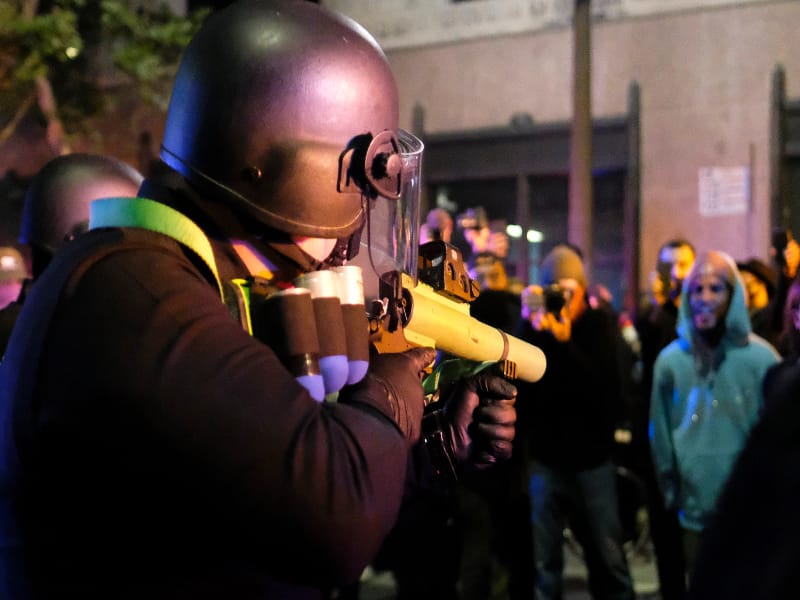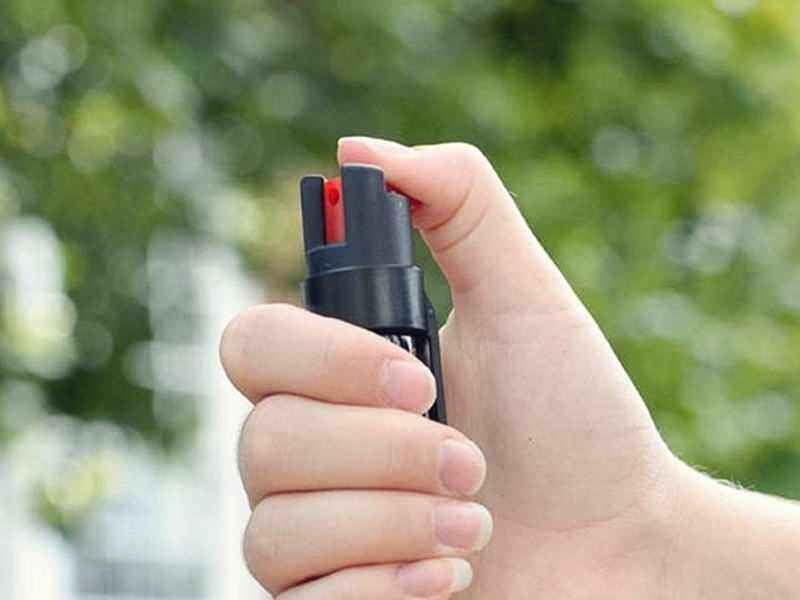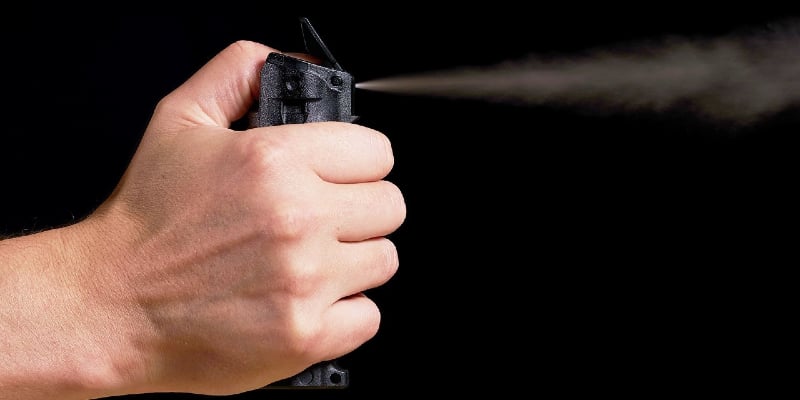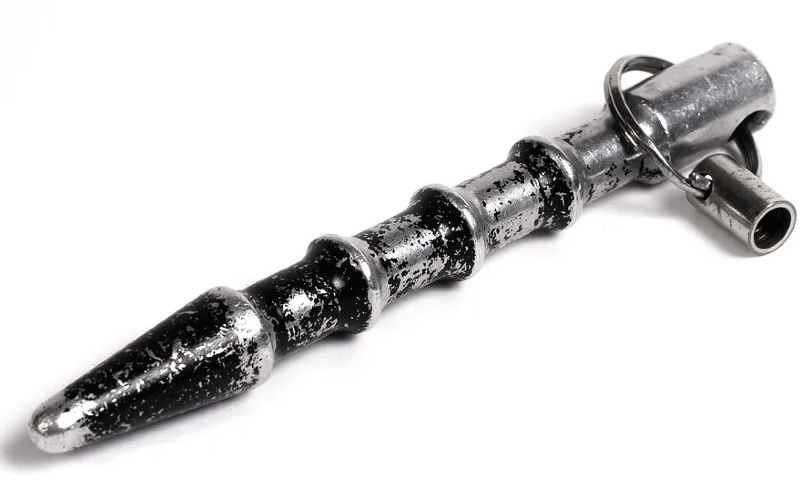As gun owners, it can be easy to fall prey to the belief that the only self-defense tool needed is a firearm. It’s accurate to say that guns are equalizers when there’s a disparity of force involved—meaning the attacker has a physical or another advantage over their victim—and also true that guns are good tools (if you know how and when to use them). However, there are good reasons to also know how to use secondary, less lethal weapons and measures. After all, part of being a responsible gun owner is being well-rounded and educated, and it’s important to understand when a secondary defensive measure would be more appropriate than drawing your firearm.

What are less than lethal weapons?
When talking about defensive tools, firearms are, of course, considered lethal weapons. Secondary defensive measures, often referred to as less than lethal weapons, are self-defense tools that aren’t lethal by design. That is not to say they couldn’t be lethal, because quite literally anything can be lethal when applied in certain ways. But they are designed as less than lethal methods to halt or de-escalate a situation. This includes tools like pepper spray and kubotans but also stretches to stun guns and the beanbag rounds that law enforcement often uses during riots.

Which secondary tool is best for you? That depends on various factors. Let’s take a look at some options
1. Stun Gun
It’s common for stun guns and tasers to be confused with one another. A stun gun is a contact tool that has to physically touch the attacker’s body in order to deliver a pulse of electricity. Tasers launch probes from some distance and then deliver electricity to the target. This means that in order to use a stun gun the user must not only be right up against their attacker but maintain contact to stun them.

Tasers allow a bit more distance—typically up to 15 feet—which isn’t as far as it sounds. It’s also important to understand that these measures aren’t going to permanently immobilize an assailant; the use of a stun gun or taser does what the former’s name suggests by temporarily stunning them.

As a general rule, these are not ideal less-than-lethal or secondary weapons. It’s also worth noting that electrical impulses can cause cardiac events, making these potentially lethal at a larger scale than tools like pepper spray.
2. Pepper Spray

Pepper spray is a less-than-lethal tool made from oleoresin capsicum, a substance derived from the Capsicum family of peppers. According to Medical News Today, the heat produced by pepper spray can be explained by comparing it to the heat of other items:
Pepper spray has a very high score on the Scoville heat units (SHU) scale, which measures the “heat” of peppers. On the Scoville scale:
- a bell pepper measures 0 SHU.
- a jalapeño pepper scores around 2,500–5,000 SHU.
- pepper spray that law enforcement officers use measures between 500,000 and 2 million SHU, with some brands measuring 5.3 million SHU.

Do all pepper sprays produce that much heat? In short, no. All pepper sprays aren’t created equally. The current industry leaders are POM and Sabre, two brands recommended by experienced self-defense experts.
Pepper spray is deployed by spraying a steady stream at the sensitive mucous membranes of the attacker (eyes, mouth, etc). If this is the secondary-defense measure you choose, consider taking a class on its use. It’s important to be familiar with the capabilities of your chosen pepper spray including details such as:
- How far the canister can effectively spray.
- How best to hold the canister for retention and accuracy.
- When the situation calls for pepper spray rather than a firearm.
- What it’s like to be pepper sprayed and how to fight through it.

That last item might give you pause—you can fight through pepper spray?—and the answer is, yes. Pepper spray is not the ultimate threat-ending tool some people make it out to be. Before choosing any less than lethal methods it’s wise to understand the pros and cons of its use. For example, the downsides of pepper spray include:
- Use could enrage an attacker instead of slowing them down.
- The attacker could be a repeat offender who’s used to pepper spray and doesn’t care at all about it being used against them, rendering it ineffective.
- Canister failures can happen.
- Pepper spray does expire.
- The wind could blow it back at you.

All that said, pepper spray is still the most ideal less-than-lethal tool. It’s not a bad idea to learn how to properly deploy pepper spray and to carry it on you with your firearm. There are situations where the use of pepper spray is more appropriate than drawing your gun. Be aware that once a canister is sprayed, it should be replaced, and that trying to save some money by buying an off-brand rather than a proven one could easily mean it’s less effective. Again: All pepper sprays do not burn at equal rates. Some are better than others.
3. Kubotan
A Kubotan is a less-than-lethal defensive tool designed for striking. It’s known by other names as well. For example, renowned firearms instructor Massad Ayoob has his own design called the Persuader. These are usually approximately six inches in length and cylindrical in shape. Some designs have a tapered, rounded point at one end and they usually have indentations or ridges at intervals along their length. The most common way of carrying them is attached to a keychain.

This is an effective less-than-lethal tool, provided you’re trained in its use. There are circumstances where a Kubotan is the best possible choice for the environment for the person carrying it. A variety of methods for its deployment exist such as stabbing, striking, and wrist restraint. It is wise to take a class from a qualified instructor, such as one certified by the Massad Ayoob Group. This tool shouldn’t be confused with the many keychain products advertised as self-defense tools when they really are not.
Why do I need a less-than-lethal tool?
There are numerous reasons to have more tools in your self-defense toolbox. For one thing, having a less-than-lethal option such as pepper spray on hand gives you more options when facing a potential threat that could be stopped without drawing your firearm. In addition, it gives you options in places where you cannot legally carry a firearm, or for those who need a self-defense method but aren’t old enough to legally carry a gun quite yet.
Whatever tool you choose, get proper training. It’s a misconception that pepper spray, kubotans, and other tools don’t require training. They do. Your success rate will be enormously higher if you know how—and when—to use something. It doesn’t matter if you’re a stellar shot with a firearm when it comes to how to use pepper spray. Different tools, different training.
Consider investing in a less-than-lethal tool such as pepper spray or a Kubotan. It’s well worth the investment.


